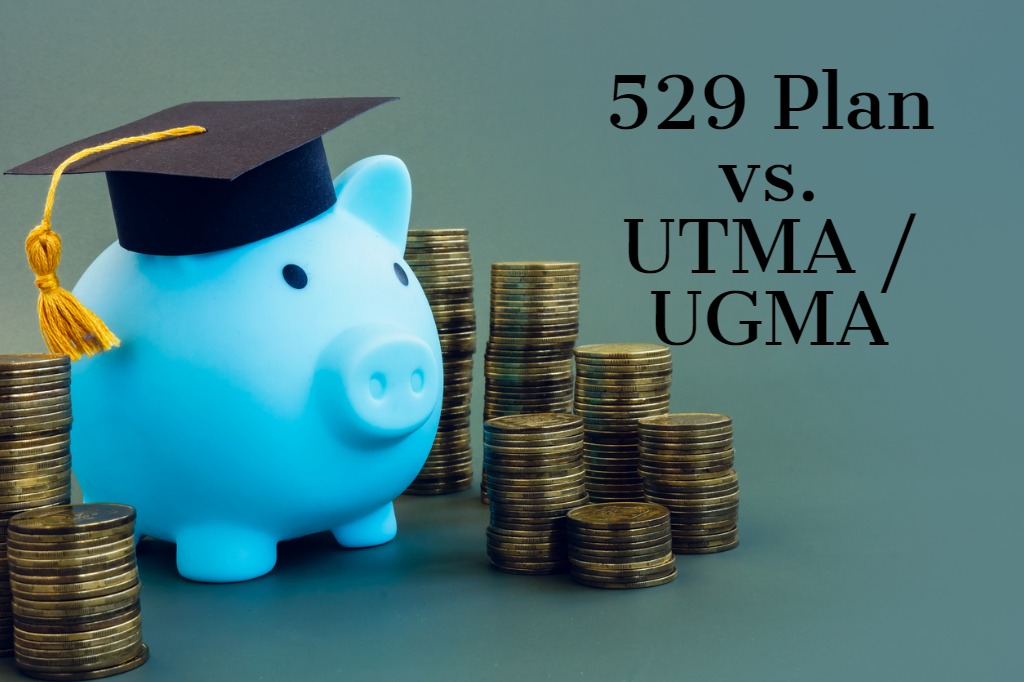When saving for a child’s future education costs, there are many different options from which to choose. Two popular options are 529 plans, and UTMA (Uniform Transfers to Minors Act) or UGMA (Uniform Gifts to Minors Act) accounts. Both offer tax advantages and can be a great way to handle college savings. But there are some critical differences between the two that you should be aware of before making a decision.
529 plans are specifically designed for education savings. They offer tax-deferred growth and the ability to withdraw funds tax-free for qualified education expenses. UTMA or UGMA accounts can also be used for Education Savings, but they are not as specific as 529 plans and may be subject to taxes and penalties on withdrawals not used for Education Savings.
What is a 529 plan?
A 529 plan is a tax-advantaged investment account that can be used to save for qualified education expenses, including tuition, fees, books, and certain room and board costs. 529 plans are sponsored by state governments and offer various benefits, including federal and state tax breaks.
What are the benefits of a 529 plan?
529 plans offer several benefits that make saving for education expenses easier and more affordable.
Some of the main benefits of 529 plans include:
- Federal and state (in some cases) tax breaks. Money invested in a 529 plan grows tax-deferred, and withdrawals are tax-free as long as they are used for qualified education expenses.
- Flexibility in how you save. With a 529 plan, you can set up automatic contributions from your bank account or payroll deductions, making it easy to save on a regular basis.
- Accounts can be used for K-12 education expenses as well as college.
- The account owner maintains control of the account.
What are the drawbacks of a 529 plan?

While 529 plans offer many benefits, there are also a few drawbacks you should understand.
- One potential drawback is that 529 plans have strict rules around how the money can be used. Withdrawals must be used for qualified education expenses, or they may be subject to taxes and penalties.
- Another potential drawback is that 529 plans are sponsored by state governments, which means that you may be limited to investing in the plan offered by your state of residence. However, many states offer residents the ability to invest in any state’s 529 plan.
What is a UTMA or UGMA account?
UTMA and UGMA accounts can also have tax advantages when used to save for qualified education expenses. However, unlike 529 plans, they are not sponsored by state governments. Instead, they are managed by financial institutions like banks and brokerages.
What are the benefits of a UTMA or UGMA account?
There are several benefits of UTMA and UGMA accounts, including:
- They offer flexibility in how the money can be used. Unlike 529 plans, which can only be used for qualified education expenses, money in a UTMA or UGMA account can be used for any purpose, including non-education expenses.
- They offer more control over how the money is invested. With a UTMA account, you can choose from a wide variety of investment options, including stocks, bonds, fine art, real estate, precious metals, mutual funds, and more. With a 529 plan, you are limited to the investment options offered by the plan.
- They offer the potential for lower taxes on earnings. With a UTMA or UGMA account, earnings are taxed at the child’s tax rate, which is usually lower than the parent’s.
- They can be used to save for both college and K-12 expenses.
What are the drawbacks of a UTMA or UGMA account?
- One potential drawback of UTMA and UGMA accounts is that they are not as tax-advantaged as 529 plans. Withdrawals from these accounts are subject to taxes, and the money may also be subject to the gift or estate tax.
- Also, at the age of majority (18 or 21, or even higher depending on the state), you lose all control over the account as the custodian. The child then becomes the complete owner of the account.
Conclusion
When saving for a child’s future education costs, several options exist. One popular option is a 529 plan (college and K-12), which offers tax advantages. Another option is UTMA or UGMA accounts, which are tax-advantaged but offer more flexibility. Each type of account has its benefits and drawbacks, so it’s essential to consider your investment objectives. Both 529 plans and UTMA/UGMA accounts have benefits that may make them a better choice for different people.
Author
Isaac is a Fee-Only (no products sold) Certified Financial Planner® Practitioner. Isaac founded Stalwart Financial Planning with offices in Fayetteville NC and Durham NC. Isaac provides comprehensive planning and investment management services to individuals from all walks of life. Isaac can be reached by phone at 910-867-8464, or by email (iallen@StalwartPlanning.com). Visit him at Stawart Financial Planning www.StalwartPlanning.com.
